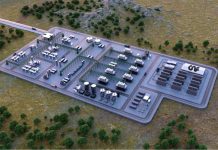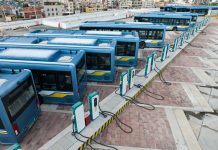Wim Fabries, European Rail Traffic Management System (ERTMS) Programme Director at the Ministry of Infrastructure and the Environment in the Netherlands, explains how a system could improve railways in the country
The Netherlands has one of the busiest railway networks in the world. The quality and safety of its railways are good but could be improved. For this reason, the Dutch government has the ambition to raise the quality of the country’s railways. An important means to achieving this is the introduction of ERTMS (European Rail Traffic Management System). Through ERTMS, the aim is to raise safety to a higher level and move forward in the areas of reliability, speed, capacity and cross-border rail traffic. The Netherlands has reserved €2.57bn for the introduction of ERTMS, which will be introduced between 2016 and 2028 on EU freight lines, and on the busiest railway routes.
The Netherlands has more than 7,000 kilometres of railway tracks. Around 6,000 trains travel on these tracks each day, carrying more than 1.2 million people. Every day, 350 freight trains bring 115,000 tons of goods to their destinations. Trains are a sustainable means that can handle massive streams of transport while taking up a minimum of space. Our efforts are aimed at improving the quality of the railways so that rail transport is and continues to be an attractive option for both passengers and freight carriers.
To achieve this, the Dutch government chose a new train protection and control system: ERTMS (level 2). The current train protection system functions well, but the electromechanical technology on which it is based is outdated and the system hails from a time when fewer trains ran than at present.
Because of its modern ICT technology, ERTMS is more “fit for the future”.
What is ERTMS?
ERTMS consists of a system in the train and a system in the rail infrastructure. The 2 systems communicate with each other by means of wireless communication (at level 2 or higher). This enables continuous contact between an individual train, the track on which it is running and central traffic control. Via a GSM-Rail radio connection, information on the rail route (stating whether a train may continue on or should stop) and on the maximum speed, is transmitted to the train and shown on a monitor screen in the train’s cab.
In the current system, train traffic is controlled through signals placed along the tracks. These signals are no longer necessary with ERTMS level 2.
What benefits does ERTMS provide?
In a train with ERTMS, the operator sees all information directly on the screen in his cab, such as the maximum speed on that route and whether the track ahead is clear. What happens when the train operator fails to respond on time? In such a case, the system automatically intervenes.
ERTMS can also contribute to the reliability, speed and capacity on the tracks. This was shown by analyses conducted between 2012 and 2014. The system allows trains to follow one another at a shorter distance. The travel time of trains on some routes also becomes shorter. This enables a better utilisation of the track, shorter travel times for passengers and better adherence to the train schedule.
Cross-border train traffic is also getting a boost. ERTMS is becoming the standard throughout Europe on international corridors. Because train protection in Europe corresponds between countries, trains can more easily travel from country to country without changing safety systems. This reduces delays at the border.
How do we work together?
An important feature of ERTMS is the fact that the train and rail infrastructure communicate with one another. This is why the programme is being fully adopted by the government and railway sector. This collaboration is essential for success. We approach ERTMS as a single integrated system that should work both in the train and on the tracks.
For the implementation of ERTMS, we are therefore working in a new manner: as a single programme team with employees from the railway infrastructure manager ProRail, the main rail operator Nederlandse Spoorwegen (Dutch Railways), and the Ministry of Infrastructure and the Environment. Together, they will set up the tendering, contracting strategy and the training of operators, rail service managers and maintenance personnel.
We are investing heavily in garnering political and social support, not only because the railways belong to everyone, but also to ensure that all bases are covered and to avoid the plague of tunnel vision when getting the job done. Stakeholders such as regional and freight carriers, consumer organisations, labour unions, and regional government are heavily consulted.
Moreover, ERTMS is being installed on existing railway lines, which is a challenge because the trains must continue to run during the renovation. This is why we are expressly involving consumer organisations and trade unions, as well as suppliers, engineering firms and building contractors.
The goal is to be able to take decisions in 2016 that form the start of the actual call for tenders. This will be a big step towards ensuring a robust, safe and reliable railway system. Because 176 years after the first train run over our rails, the railways have become an integral part of our country. Trains are essential for our society and our economy. This is why ERTMS is much more than a train protection system; it heralds the switch to a high-quality railway system that is ready for the future.
Wim Fabries
ERTMS Programme Director
Ministry of Infrastructure and the Environment – The Netherlands










